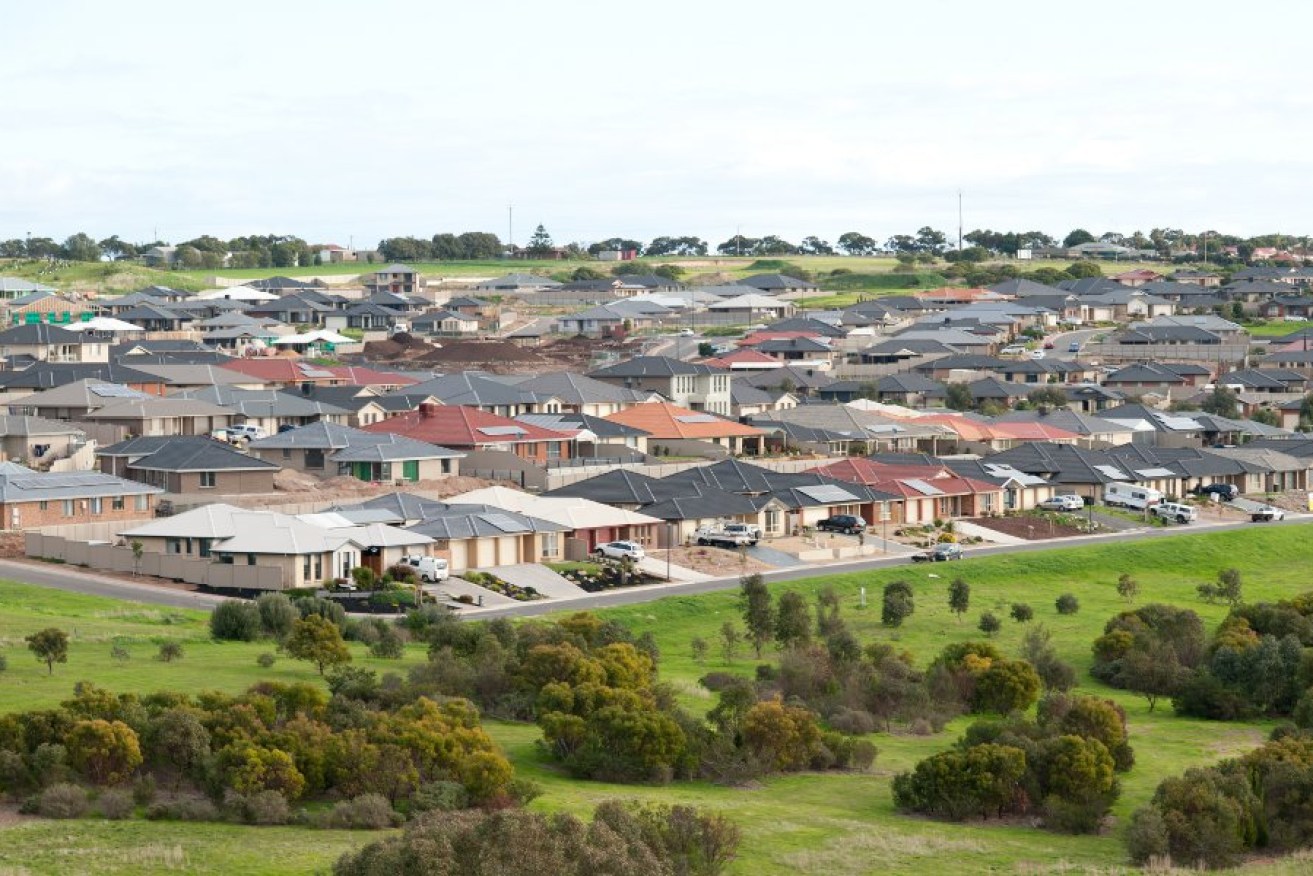The 20-minute neighbourhood

What shape do we want our suburbs to take? Photo: Nat Rogers / InDaily
The idea that every home should have local services and facilities within a 20-minute walk, cycle or public transport trip seems a no-brainer. But is it a worthwhile and realistic goal, or a dream?
The draft metropolitan planning strategy released earlier for Melbourne proposes a city made up of 20-minute neighbourhoods. The idea is that every home will be within 20 minutes travel time of jobs, shops, cafes, schools, parks and community facilities.Of course, every home already is if you’re driving, but the important innovation here is that Plan Melbourne proposes it will be 20 minutes travel by active modes – ie by public transport, walking and cycling.It’s certainly an appealing idea. It promises to draw suburban residents out of their cars en masse. That would provide environmental benefits, better health outcomes, improved local amenity, stronger communities and reduced traffic congestion.
Who wouldn’t want to have local services within an easy walk? And residents would still retain the option of driving! It seems there are no losers here, only winners.
Is it too good to be true? There are a number of issues I’d like to see explored first before I’d be convinced this is the clear and obvious winner Plan Melbourne would have me believe it is.
Google Maps tells me I can cycle to my nearest supermarket in seven minutes, which is reasonably competitive with driving (four minutes). It says it’ll take me 20 minutes to walk. It won’t give me an answer for public transport but I can see it’d take longer.
Which mode is the limiting bound? If it’s cycling, then we’ve pretty much got 20-minute neighbourhoods already. A cyclist can travel 5km in 20 minutes, which yields a radius of almost 80sqkm.
If it’s public transport, then in many suburbs 20 minutes will be far too restrictive. The attractiveness of public transport for short trips is limited because walk and wait times make up a relatively large part of the overall travel time. In addition, public transport evolved to serve the CBD; it isn’t set-up as a series of small-scale “hub and spoke” systems serving each neighbourhood centre or local facility, and nor should it be.
While cycling will be an attractive option for some people, walking must be the default active mode because it’s the only one that will suit the majority of travellers. But after allowing for differences in factors like age and topography, walking implies all the nominated services and facilities would need to be located within 1 – 1.5km of each home (ie a radius of 3 – 7sqkm).
A key issue with a relatively dense service delivery grid is the trade-off between economies of scale and travel time. For example, it would undoubtedly be nice to have a state secondary school within 20 minutes active travel of all homes (as Plan Melbourne specifically envisages), but some economies of scale would necessarily be foregone. Big high schools offer more courses, more extra-curricular activities, and more specialist staff than smaller schools.
Even assuming services and facilities could be retro-fitted in the suburbs to provide the full-service neighbourhood centres envisaged in Plan Melbourne, the optimal spacing is not the same for all services and facilities. They don’t all fit neatly within a 20-minute access time. Users are also prepared to travel further for some than others; indeed, some actively prefer the more distant option – eg private schools.
Nor can all activities be co-located easily; for example, many existing primary schools are not part of neighbourhood centres. The task of giving each dwelling access to at least two (and very possibly more) geographically separate local destinations within the 20-minute time frame would be extraordinarily hard.
While state and local governments might see political advantage in increasing the density of public services, private providers won’t show any interest unless there’s a clear commercial imperative.
Only a very limited range of businesses can flourish with a small, defined catchment. Most seek to draw customers from as large an area as possible. Many businesses see an advantage in co-locating in a limited number of locations.
It might well be feasible to establish something that resembles a network of neighbourhood centres every 2-2.5km in both directions. But the liklihood is a large proportion will be very small and offer only a limited and lopsided range of services. They won’t be attractive to the locals.
Even in locations where local services are good, some residents will nevertheless want more choice. They’ll want to travel to larger centres that offer a bigger range and/or a more exciting experience than they can get with a 20-minute walk.
The idea that residents could find, or would seek out, a job within a 20-minute walk of home misunderstands the nature of cities. A key reason they’re attractive places to live is they offer opportunities for workers to specialise and firms to agglomerate. That’s a key reason why the median journey to work in Melbourne is around 15 kilometres for both car and public transport commuters.
Given that 90 per cent of households have at least one car (and more than half have two or more), Melburnians have ample scope to travel beyond their immediate neighbourhood to access better work and non-work opportunities.
I’ve no doubt the idea of 20-minute neighbourhoods will appeal reflexively to many planners (see Are big cities just collections of country towns?). But it seems to me it’s more about good politics than good policy.
Before I’ll be persuaded, I want to see evidence that simply reducing walking times in the suburbs will lead, in the absence of severe constraints on car use, to a large mode shift away from cars for neighbourhood trips. I want to understand what the costs would be (they’re not stated in Plan Melbourne, naturally) and how they’d compare to the benefits.
This article was first published on Crikey’s The Urbanist blog.




